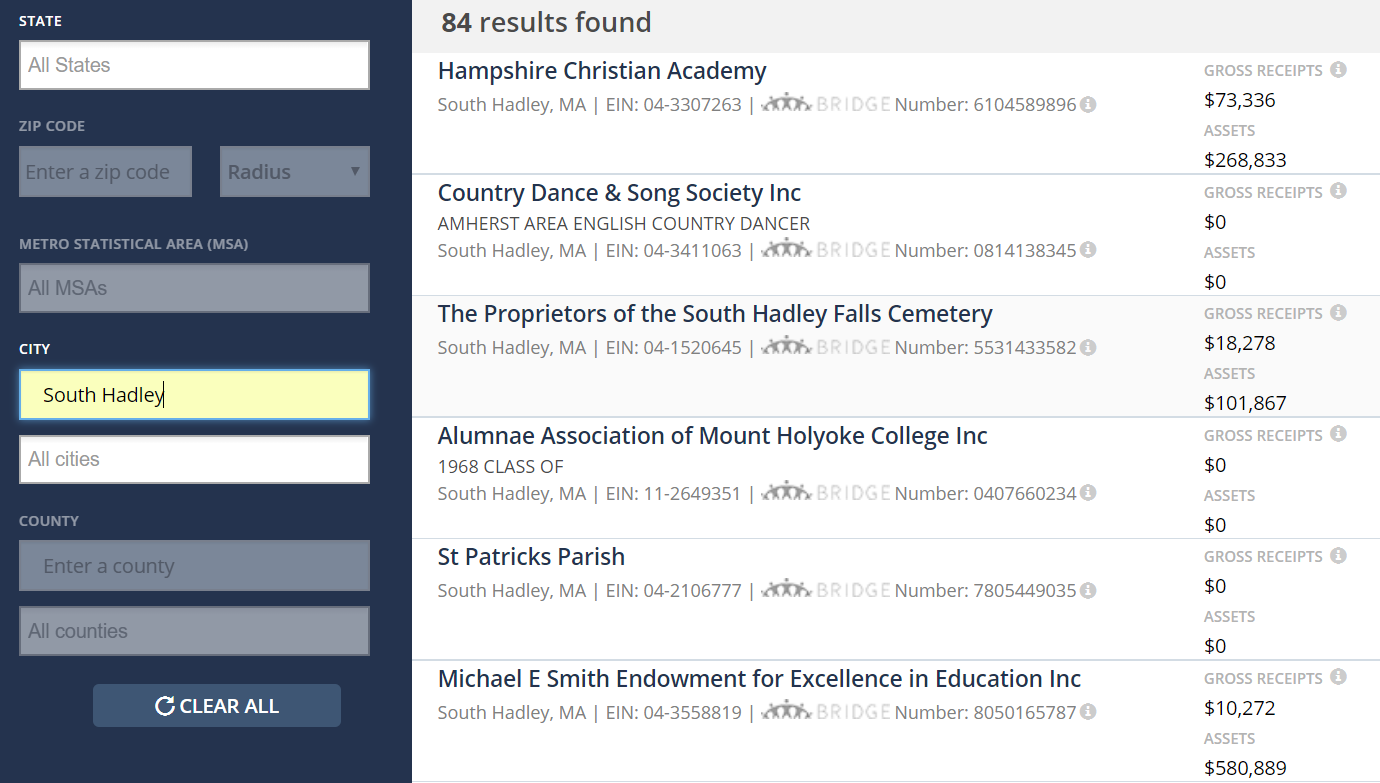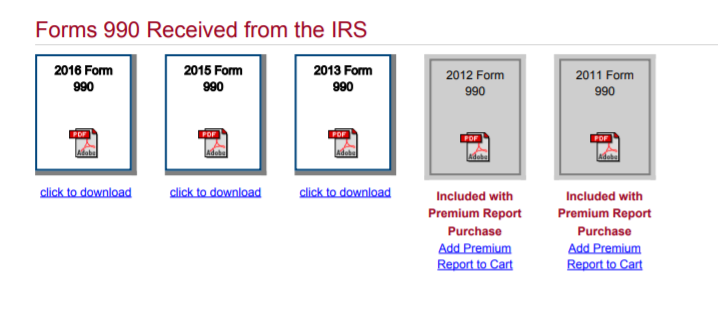According to the National Center for Charitable Statistics, there are approximately 1.5 million nonprofits operating in our country, offering a niche area for specialization. Yet how do you efficiently determine the opportunities in your market?
This Lowdown is dedicated to sharing my prospecting methodology using Guidestar, a nonprofit site that aggregates data from 990 tax returns. While there are a number of sites dedicated to nonprofits, this one provides easy access to tax files – which reveals a wealth of information when narrowing down your list.
How to use Guidestar:
Step 1: Sign up and start searching. You can search by city or state to the left, with results revealed to the right. You can see in this example, there are 84 nonprofits in my rural town of South Hadley, MA. In the far right column you will quickly assess the asset size of the organizations and click on the bold title in the center column to gain more information: 
Step 2: You are now at the profile level of the nonprofit you’ve selected. Already you’ve gained a key contact name in the far right column. Click the FINANCIAL tab on the right:
Step 3: From the option that appears next, select PDF Preview:

Step 4: This PDF will have a few clickable links and summary information about the nonprofit, but you’ll want to scroll to the end of the document and select the most recent 990 tax filing to the left:

Step 5: Gather your lead information from various fields on the 990 tax form and determine if this organization is substantial enough to benefit from your offering. From the 990, you’ll be able to quickly gather:
- Page 1: Organization and accountant contact information
- Page 7-8: Review all of the board members and the compensation of the highest paid employees to determine the structure and depth of organization. (You may be surprised by your connections to board members.) Page 8 will also list any independent contractors which may offer other connections to the organization.
- Page 10: List of expenses, including lines 5-7: Compensation/Salaries; line 23: Insurance Expense
- Page 11: List of assets, including line 10a: Land, Building & Equipment Totals
- Schedule D, page 2: List of art, historical treasures and other collectibles, break out of all land, buildings & equipment, for more detail
These few details will give you a sense of the size and complexity of the organization, their current spend on insurance and what they have available to insure.
Should you seek a topic to discuss with a new prospect, I point you to a new whitepaper from sponsor, CharityFirst, discussing heightened concern for asset protection of nonprofits in conjunction with the #METOO movement and increase in sexual harassment claims. This paper reviews the Employment Practices Liability coverage needs of nonprofits and offers best practices to manage in this new environment of heightened awareness and potential for claims.
Lowdown on Top Risks for Today’s Nonprofits: Employment Practices Liability Coverage in the Age of “Me Too”
- Page 4-6: Scenarios unique to nonprofits (staff member to client/staff member to coworker/volunteer or donor to client or staff member)
- Page 6-7: Five steps to combat sexual harassment in the workplace
- Page 7-9: Overview of EPL coverage and proper asset protection for nonprofits
Prospecting is never easy, but getting an inside look at the structure and spend of a nonprofit prior to approaching the director, offers you an opportunity to determine asset size, employee base and insurance spend. Give our Research & Trends a look for the latest papers and research to share with your prospect, whether it be weather, cyber or employer liability, we’ve got you covered!
Happy reading – Pam Simpson
Was this article valuable?
Here are more articles you may enjoy.



 CRC Group Signs Agreement to Acquire Euclid Transactional
CRC Group Signs Agreement to Acquire Euclid Transactional  Cloudy Future for Bourbon Has Jim Beam Closing Distillery for a Year
Cloudy Future for Bourbon Has Jim Beam Closing Distillery for a Year  Brown & Brown Files Suit Over Alleged Howden Poaching of 200+ Employees
Brown & Brown Files Suit Over Alleged Howden Poaching of 200+ Employees  2 New Jersey Pilots Killed in Helicopter Collision Frequented Nearby Cafe Together
2 New Jersey Pilots Killed in Helicopter Collision Frequented Nearby Cafe Together 


